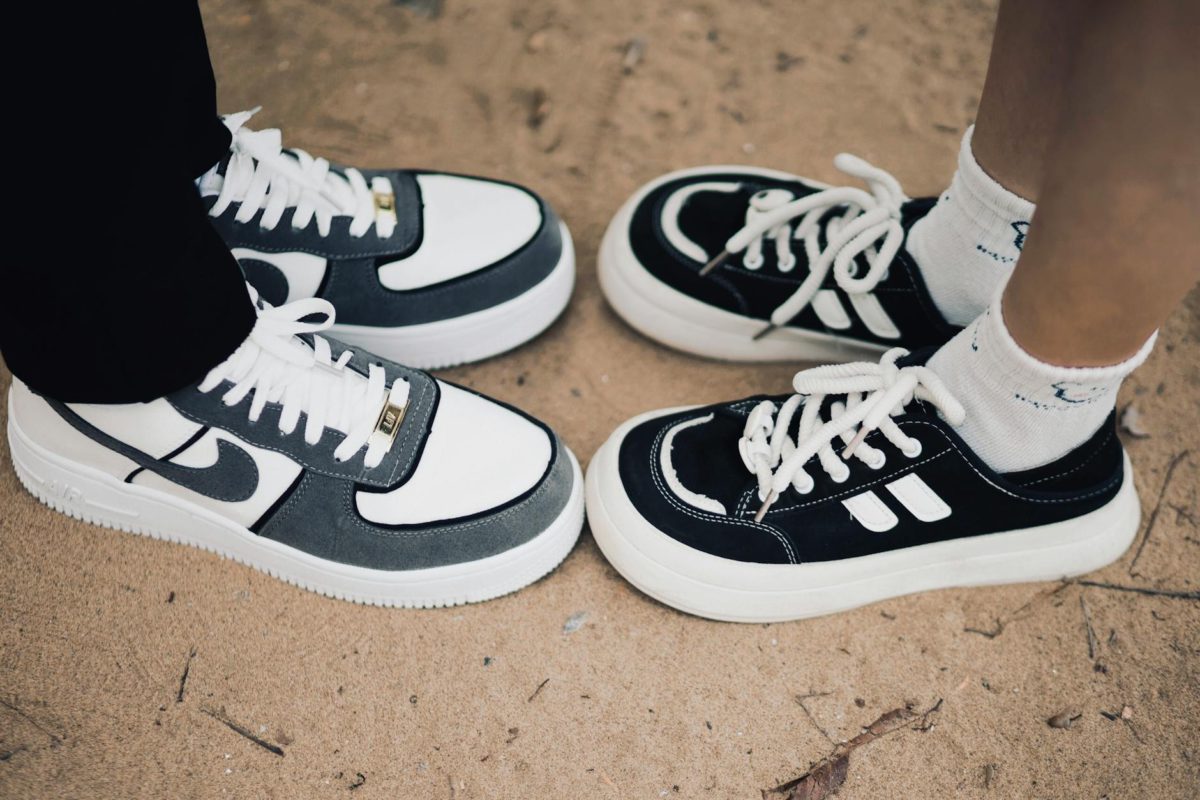Everywhere you look these days, from the gym to the office, men are sporting orthotic sneakers. But why are these shoes gaining such popularity in America? The answer lies in a blend of comfort, support, and style. With more men prioritizing foot health due to long hours on their feet, orthotic sneakers offer the perfect solution. They provide essential support for different foot types and have evolved to match modern fashion trends. This article will explore the reasons behind the rise of men’s orthotic sneakers and why they’re becoming a staple in wardrobes across America. Let’s get into why these shoes are not just a trend but a necessity for many.
The Rise of Orthotic Sneakers
Orthotic sneakers are taking America by storm. They offer comfort, support, and style, making them a popular choice for many. But how did we get here? Let’s dive into the history and the influence of Millennials on this trend.
Historical Context
Orthotic footwear has deep roots. It dates back to early civilizations where people needed extra foot support.
- Ancient Times: The first known orthotic devices are almost 2,000 years old. People placed layers of wool in their sandals to ease foot strain.
- 1774: Johann Adam Birkenstock, a German shoemaker, started creating comfortable corrective shoes.
- 19th Century: Hugh Owen Thomas, a Welsh surgeon, introduced devices like the “Thomas splint,” setting the groundwork for modern orthotics.
- 20th Century: Advancements in materials and technology made orthotics more effective and accessible.
Today, orthotic footwear has evolved into stylish sneakers that look great and support foot health.
Influence of Millennials
Millennials have played a big role in making orthotic sneakers popular. Here’s how:
- Health Consciousness: Millennials prioritize health. They want shoes that support their active lifestyles.
- Tech-Savvy: This generation loves tech. They appreciate sneakers designed with cutting-edge materials and ergonomic features.
- Fashion-Forward: Orthotic sneakers aren’t just functional. They’re stylish too. Brands have designed them to look good with any outfit.
- Social Influence: Social media has amplified this trend. Influencers and celebrities often showcase orthotic sneakers, making them a must-have item.
With these factors combined, it’s clear why orthotic sneakers have become a staple in many wardrobes.
 Photo by Thịnh Văn
Photo by Thịnh Văn
Health Benefits of Orthotic Sneakers
Orthotic sneakers aren’t just another pair of shoes. They have a lot of health benefits that can change the way your feet feel and function. Below, we’ll explore the key advantages to wearing orthotic sneakers, including enhanced support, pain relief, and injury prevention.
Support and Comfort
 Photo by Ethereal Th
Photo by Ethereal Th
Orthotic sneakers provide superior support and comfort compared to regular sneakers. Here’s how:
- Arch Support: Most orthotic sneakers are designed with built-in arch support that helps distribute weight more evenly across your feet. This can greatly reduce strain on the arches.
- Cushioning: The cushioning in orthotic sneakers often includes memory foam or gel, which molds to your feet, offering personalized comfort.
- Heel Support: Orthotic sneakers typically have reinforced heel areas to stabilize your foot and reduce the risk of heel pain.
- Custom Fit: Many brands offer customizable inserts or insoles, so you can adjust the fit to your needs.
With these features, orthotic sneakers make it easier to stay active and comfortable all day long.
Pain Relief
Foot pain can be a major problem, affecting everything from your mood to your mobility. Orthotic sneakers are designed to help alleviate this pain in several ways:
- Plantar Fasciitis Relief: The arch and heel support in orthotic sneakers can help reduce the pain from plantar fasciitis, a common foot condition.
- Bunions: Wider toe boxes and better overall foot support can ease the discomfort associated with bunions.
- Flat Feet: People with flat feet often experience pain because their arches aren’t providing enough support. Orthotic sneakers can provide that much-needed arch support.
- Diabetic Foot Issues: Proper foot support is crucial for individuals with diabetes, as it can help prevent ulcers and other foot issues.
Injury Prevention
For those who spend long periods on their feet, orthotic sneakers play a crucial role in preventing injuries:
- Ankle Support: Stronger ankle support means fewer rolled or twisted ankles, especially on uneven surfaces.
- Shock Absorption: Enhanced cushioning absorbs more shock from walking or running, protecting your joints from impact injuries.
- Better Balance: Orthotic sneakers often improve overall balance, reducing slips and falls.
Wearing orthotic sneakers can make all the difference in keeping your feet healthy and injury-free. Whether you’re walking, running, or standing for long hours, these shoes are essential for overall foot health.
Fashion Meets Function
Men’s orthotic sneakers have seamlessly combined fashion and function, setting a new trend in the footwear industry. Let’s explore how trendy designs and celebrity endorsements have contributed to the popularity of these stylish yet supportive shoes.
Trendy Designs
In 2024, the market for men’s orthotic sneakers is brimming with trendy designs and brands that are revolutionizing the perception of orthopedic footwear. Some of the leading designs and brands include:
- Aetrex Chase Arch Support Sneakers: Known for their all-day comfort, arch support, and stability, these sneakers blend style with functionality, making them a top choice among consumers.
Photo by US News
- Contemporary Tech-Infused Designs: Sneakers with cutting-edge materials and ergonomic features are gaining popularity among tech-savvy individuals who value both style and foot support.
- Sustainable Footwear: Brands are focusing on eco-friendly materials and sustainable practices in the design of orthotic sneakers, appealing to the environmentally conscious consumer.
- Versatile Styles: From casual to athletic, orthotic sneakers come in a variety of styles that cater to different preferences and activities, ensuring there is a suitable pair for every occasion.
These trendy designs not only cater to foot health but also elevate the overall look and feel of men’s footwear, making them a sought-after choice in the fashion world.
Celebrity Endorsements
The influence of celebrity endorsements on the popularity of men’s orthotic sneakers cannot be overlooked. Celebrities play a significant role in shaping consumer preferences and trends, and their endorsement of orthopedic footwear has propelled it into the mainstream.
- Influencer Marketing: Many celebrities and influencers across various industries have been spotted wearing orthotic sneakers, showcasing them as a fashionable and essential accessory.
- Red Carpet Moments: From red carpet events to casual outings, celebrities are often seen sporting stylish orthotic sneakers, sparking interest and demand among fans and followers.
- Brand Collaborations: Collaborations between renowned celebrities and orthotic sneaker brands have resulted in exclusive collections that blend celebrity style with orthopedic functionality, appealing to a broader audience.
The endorsement of orthotic sneakers by celebrities has not only increased their visibility but has also positioned them as a fashionable statement piece that prioritizes foot health without compromising on style.
Market Trends and Consumer Preferences
Men’s orthotic sneakers have seen a surge in popularity in America, driven by current market trends and evolving consumer preferences. Let’s explore the key factors shaping this trend.
Demographic Insights
Understanding the demographics that are most inclined to purchase orthotic sneakers provides valuable insights into the market appeal of these specialized shoes. Research indicates that middle-aged and older individuals, particularly those with active lifestyles or foot conditions, are more likely to invest in orthotic sneakers. This demographic segment values both comfort and foot health, making orthotic footwear a preferred choice for everyday wear and physical activities.
Sales Data
Recent sales data and market research findings underscore the increasing popularity of men’s orthotic sneakers in America. According to industry reports, the orthopedic footwear market is experiencing significant growth, with a notable preference for sustainable and eco-friendly products among consumers. The market size has shown steady expansion, reflecting a rising demand for orthotic sneakers that provide both style and support. This surge in sales highlights the shift towards health-conscious footwear choices and the evolving trends in men’s fashion preferences.
 Photo by Erik Mclean
Photo by Erik Mclean
Top Brands and Models in 2024
Men’s orthotic sneakers have seen a surge in popularity in 2024, with various brands and models catering to both style and foot health. Let’s delve into the top brands and models leading the market this year.
Orthofeet
Orthofeet stands out as a leading brand in the orthotic sneakers market, known for its innovative designs and focus on foot comfort. The brand’s popularity stems from its dedication to providing exceptional arch support, cushioning, and stability in their sneakers. Orthofeet offers a range of popular models that combine style with functionality, making them a top choice for individuals seeking both comfort and support in their footwear.
Hoka
Hoka has gained significant traction in the orthotic sneaker industry due to its unique approach to design and emphasis on cushioning and shock absorption. The brand’s sneakers are renowned for their generous midsole cushioning, which enhances comfort and reduces strain on the feet. Hoka’s key features include lightweight materials, responsive cushioning, and a focus on maximizing comfort without compromising on style.
Skechers
Skechers has solidified its position in the market with a significant market share in orthotic sneakers. The brand’s success can be attributed to its emphasis on blending fashion trends with orthopedic functionality. Skechers offers a wide range of orthotic sneakers that appeal to consumers looking for both style and support in their footwear. With innovations in design and technology, Skechers continues to be a popular choice among individuals seeking comfortable and stylish orthotic sneakers.
These brands and their popular models showcase the evolution of men’s orthotic sneakers in 2024, where comfort, support, and style converge to meet the demands of modern consumers seeking both fashion and foot health in their footwear choices.
 Photo by Erik Mclean
Photo by Erik Mclean
Conclusion
Men’s orthotic sneakers have become a ubiquitous presence in America, blending comfort, support, and style seamlessly. The surge in popularity can be attributed to a combination of factors. Millennials, known for their health-conscious mindset, tech-savvy preferences, and influence through social media, have actively promoted the trend of orthotic sneakers as a fashionable and functional choice. The historical evolution of orthotic footwear, from ancient civilizations to modern innovations, underscores the enduring need for foot support and health.
The market trends reflect a growing demand for orthotic sneakers, especially among middle-aged and older individuals seeking comfort and foot health benefits. Brands like Orthofeet, Hoka, and Skechers have revolutionized the industry with trendy designs, advanced materials, and celebrity endorsements, making orthotic sneakers a staple in men’s wardrobes. As consumers prioritize both style and well-being, men’s orthotic sneakers continue to redefine the footwear landscape, offering a blend of fashion and function that resonates with a diverse audience across America.

